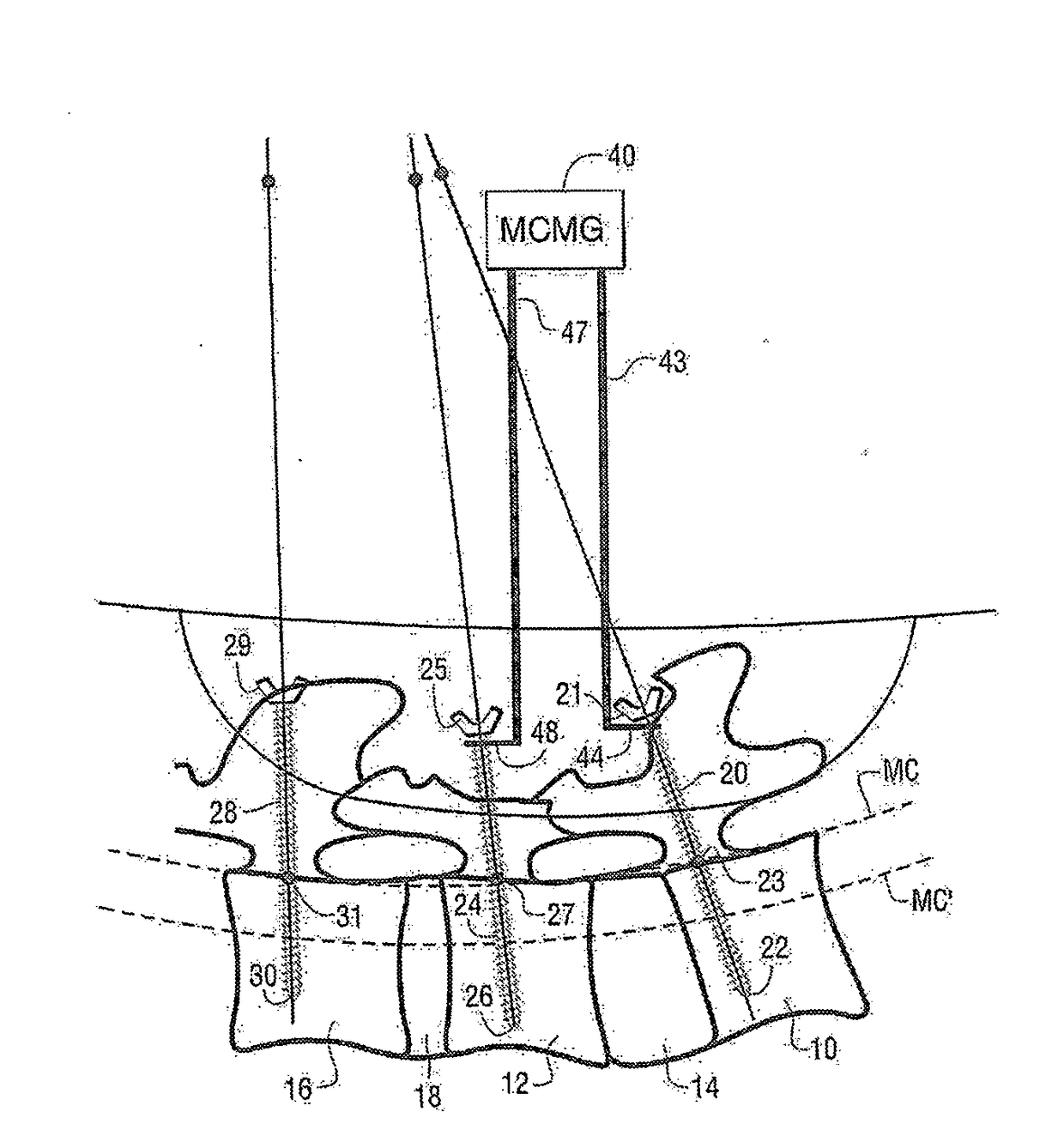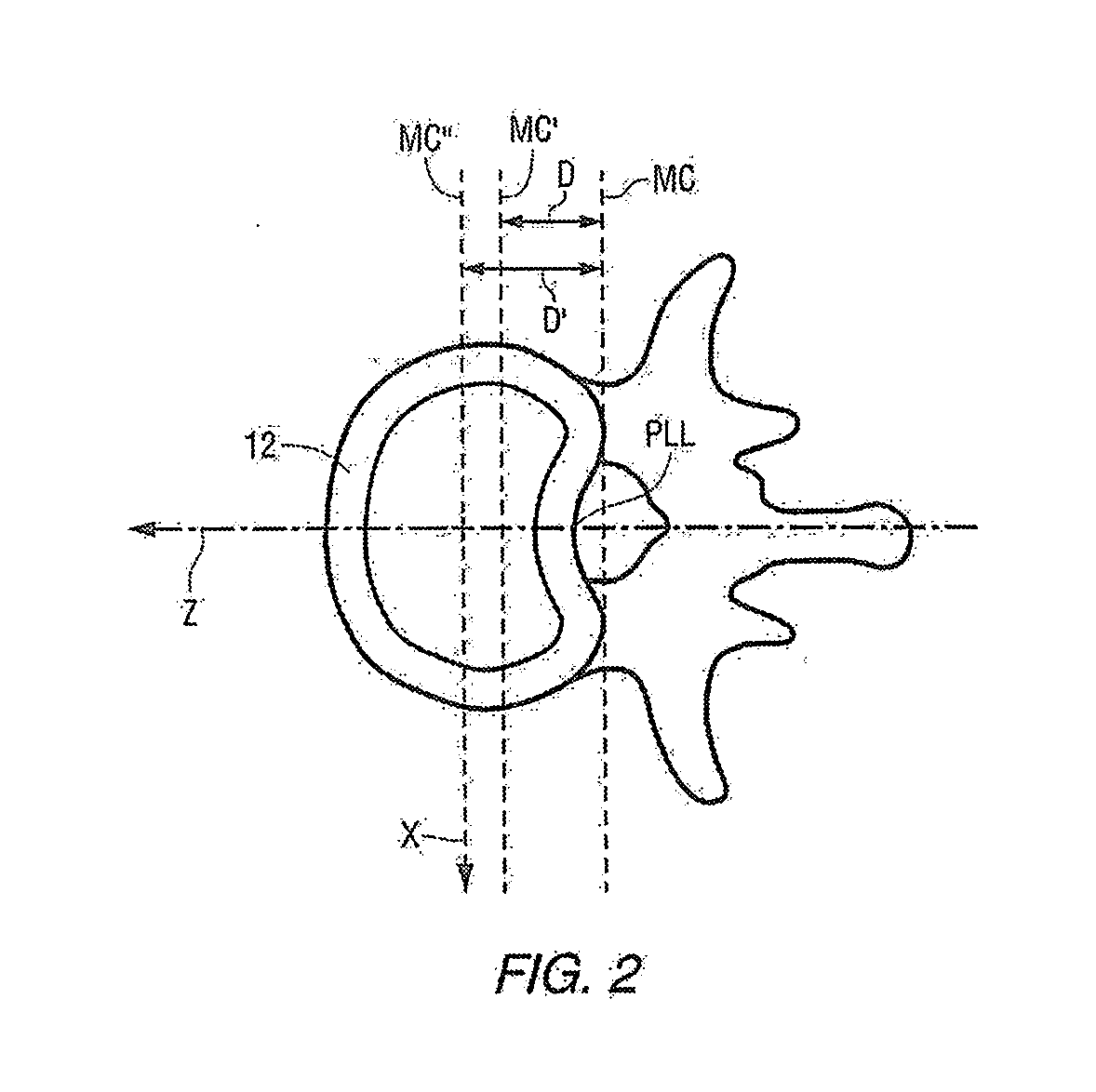Methods and apparatus for spinal reconstructive surgery and measuring spinal length and intervertebral spacing, tension and rotation
a technology of intervertebral spacing and spinal reconstruction, applied in the field of spinal reconstruction surgery, can solve the problems of inadequate definition of vertical stability along the y-axis of the human spine, insufficient current products to provide full three-dimensional spinal re-alignment, and insufficient y-axis techniques, etc., and achieves better guidance and inadequate soft tissue release
- Summary
- Abstract
- Description
- Claims
- Application Information
AI Technical Summary
Benefits of technology
Problems solved by technology
Method used
Image
Examples
Embodiment Construction
[0033]FIG. 1 is an isometric view illustrating two adjacent spinal vertebrae 10 and 12 separated by a spinal disk 14. Three axes have been labeled in FIG. 1, the X-axis, Y-axis, and Z-axis. The X-axis is oriented laterally from side-to-side of the patient. The Y-axis is oriented along the length of the spine. The Z-axis is oriented from front to back of the patient, i.e., the anterior-posterior direction. In accordance with embodiments of the present invention, spinal length along the Y-axis at the middle column may be measured, intervertebral spacing along the Y-axis at the middle column may be measured, intervertebral tension applied to the posterior longitudinal ligament along the Y-axis may be measured, the height of intervertebral spacers along the Y-axis at the middle column may be measured, intervertebral rotation around the Y-axis may be measured, and flexion-extension or anterior-posterior rotation around the X-axis may be measured.
[0034]FIG. 2 is a top view of a spinal ver...
PUM
 Login to View More
Login to View More Abstract
Description
Claims
Application Information
 Login to View More
Login to View More - R&D
- Intellectual Property
- Life Sciences
- Materials
- Tech Scout
- Unparalleled Data Quality
- Higher Quality Content
- 60% Fewer Hallucinations
Browse by: Latest US Patents, China's latest patents, Technical Efficacy Thesaurus, Application Domain, Technology Topic, Popular Technical Reports.
© 2025 PatSnap. All rights reserved.Legal|Privacy policy|Modern Slavery Act Transparency Statement|Sitemap|About US| Contact US: help@patsnap.com



